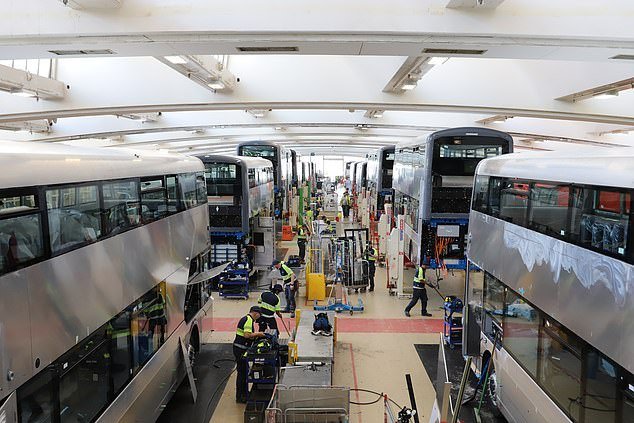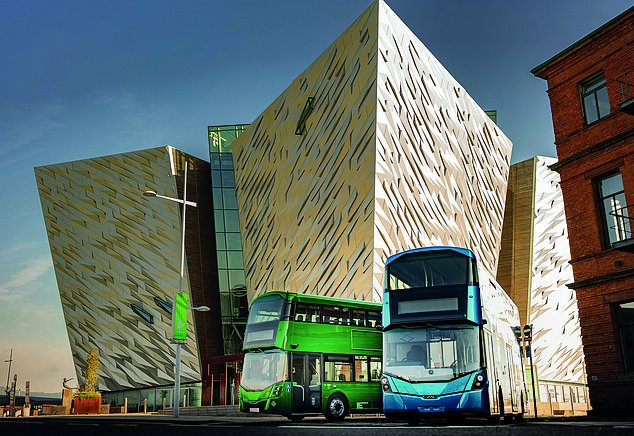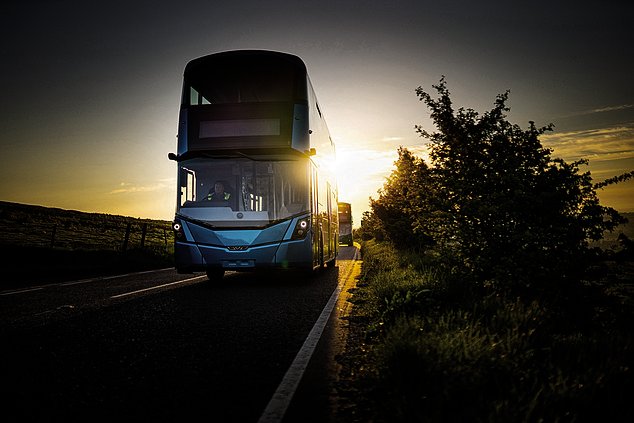How London bus manufacturer Wrightbus is creating thousands of ‘future-proof’ jobs – in a former cigarette factory
At a time when the business and investment communities are busy evangelising the potential of artificial intelligence, bus manufacturing may not be the first sector that comes to mind when the thought of cutting-edge technology comes to mind.
But on the former site of a JTI Gallaher cigarette factory in Ballymena, Northern Ireland, a British company is rapidly developing groundbreaking technology, creating thousands of skilled jobs and setting its sights on global expansion.
“It’s buzzing here,” says CEO Jean-Marc Gales of the 40-hectare site where 800 jobs were lost when tobacco production stopped in 2017.
“We have gone from producing eight buses a week at the beginning of last year to 22 today. Next year there will be 26, it’s a different factory and it’s buzzing with life.
‘We are about to introduce a night shift on the main assembly line, so we will be working day and night to decarbonise here.’
Vehicle veteran: CEO Jean-Mar Gales was appointed after CEO roles at Citreon, Peugeot and Lotus, and was chairman of Williams Advanced Engineering
Wrightbus reborn
If you’ve traveled by bus or coach in Britain in the last 75 years, there’s a good chance you’ve used a vehicle produced by Wrightbus.
From its origins as a bus provider to the Tyrone County Education Committee in the 1950s, Wrightbus was behind London’s iconic ‘bendable bus’ in 2001 and the ‘Boris bus’ ten years later.
The group was a major supplier to local authorities and service providers in the UK for most of its existence, before going into administration in 2019.
Wrightbus was subsequently rescued under the ambitious ownership of entrepreneur Jo Bamford and is now led by a CEO with an impressive track record of turnaround stories.
Boss Gales was appointed last year due to success in the automotive industry, including leading Peugeot and Lotus.
“Wrightbus was in a much better situation than when I joined Lotus in 2014,” laughs Gales.
‘Lotus had more losses than revenue per year when I joined. When I left and we sold the company to Geely three years later, the company had double-digit EBITDA (earnings before interest, taxes, depreciation and amortization).
“But what all these roles have in common is scaling a business, preparing it for future growth and returning it to profitability.”

Higher ceiling: The Ballymena factory expects to employ 2,000 workers next year
World firsts for zero emissions
A reborn Wrightbus has fueled rapid expansion thanks to its UK-based development of unique, zero-emission vehicles, placing the company among Britain’s 100 fastest growing companies in this year’s Growth Index.
The group boasts the world’s first double-decker hydrogen bus, and its single-deck equivalent, as well as ‘the most efficient double-decker electric open top’, the latter of which readers may recognize from the hundreds of tourist routes circling Britain . towns.
“Depending on the year, our annual growth rate was between 50 and 80 percent,” Gales says.
‘We are now the number one zero-emission bus manufacturer in Britain and Europe – we are probably one of the fastest growing major manufacturing companies in Britain.’
He adds that a sharp focus on cost management will ensure the group is firmly profitable by 2024, with Wrightbus ‘targeting more than half a billion in sales this year, compared to a record of around £300 million last year’.
“And we will put a substantial amount of that £500 million back into research and development,” says Gales.
After building just 274 buses in 2021, Wrightbus expects to surpass 1,000 buses this year.
This has been made possible through additional recruitment, with Wrightbus’s workforce expected to grow from 1,000 when Gales joined to more than 2,000 next year, from a current level of around 1,800.
“We also have fifty students, and another eighty will be added,” says the French director, an engineer by profession.
‘And there is no age limit for this, so anyone who wants a career change or a new industry is welcome to join us.
“These are future-proof, skilled jobs we are creating in Britain – and every job here creates three supply chain jobs as we source from 47 counties across the country.”

Futuristic: The group has the first double- and single-deck hydrogen buses in the world
Wrightbus focuses on hydrogen
Of the buses sold by Wrightbus this year, 80 percent will be powered by electric batteries, while hydrogen and traditional diesel engines each account for 10 percent.
The company expects the share of diesel vehicles to decline over time as its customers phase out the technology, and the share of hydrogen vehicles to rise.
But why hydrogen?
“Frankly, our power grids are limited. “If we started charging everyone in Britain’s electric cars and buses from tomorrow, we wouldn’t be able to put the kettle on for a cup of tea,” Gales explains.
‘The electricity grid is already notoriously overloaded. And hydrogen is of course an excellent source of energy that can also be stored.’
The technology also enables longer journeys than is currently achievable with their electric equivalents.
Gales says: ‘On longer routes you absolutely cannot drive electric – once you go more than 200 miles per day it becomes difficult. And I know some people deny that.
‘But if, for example, you have a bus that goes from Birmingham to London and back, you can’t just stop for two hours and charge.
‘You can refuel with hydrogen within a few minutes, so for certain applications hydrogen is the only source we see. That is why we are developing a hydrogen bus that will come onto the market in mid-2026.’

Eye on the horizon: Wrightbus sets its sights on the global expansion of its buses
International expansion
Just this week, the group sold 46 hydrogen buses to a German carrier in the city of Cottbus, Brandenburg.
It is not the first deal Wrightbus has made in the country, boosting trade with a €350 million subsidy scheme to support renewable hydrogen production.
And Wrightbus is looking even further afield in its efforts to drive future growth.
Gales says: ‘In recent months we have won five major European tenders.
‘We have a factory in Malaysia, which will start production of a bus for Hong Kong and Singapore next year.
‘We had a good market share in Hong Kong and Singapore (previously), but we are going to enter those markets again with a new electric double-decker with three axles.
“That will be a very strong future business for Wrightbus in that region, from which we will expand into Singapore to sell and build there. From there we can send to Australia and New Zealand, which are also traditional places for our buses.”
Some links in this article may be affiliate links. If you click on it, we may earn a small commission. That helps us fund This Is Money and keep it free to use. We do not write articles to promote products. We do not allow a commercial relationship to compromise our editorial independence.

